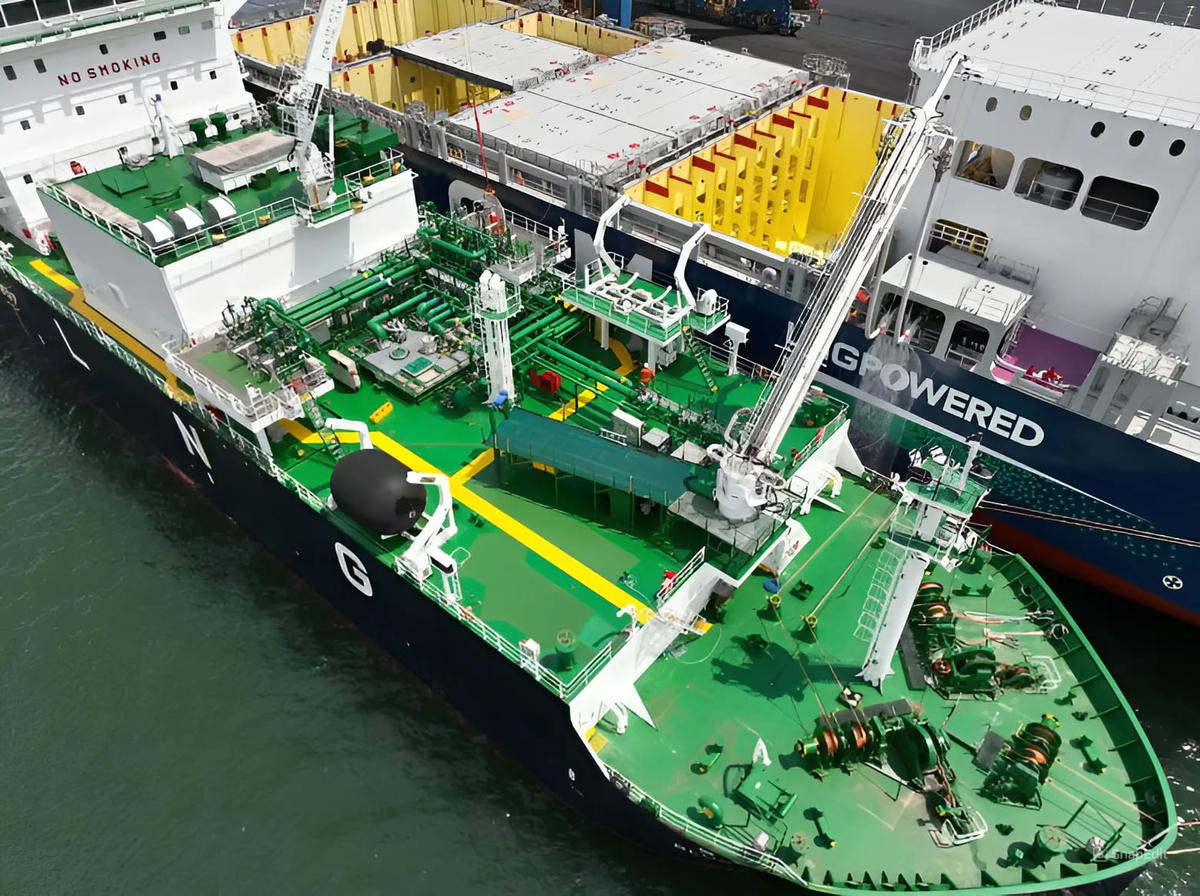KLB conducts first SIMOPs LNG bunkering of a container ship in South Korea
Korea LNG Bunkering (KLB), a subsidiary of Korea Gas Corporation, bunkered one of CMA-CGM's container ships with 300 mt of fossil LNG during cargo unloading operations at the Port of Busan in South Korea.
 PHOTO: SIMOPs LNG bunkering operation of the CMA CGM vessel in the Port of Busan in South Korea. KLB
PHOTO: SIMOPs LNG bunkering operation of the CMA CGM vessel in the Port of Busan in South Korea. KLB
Simultaneous operations (SIMOPs) refer to the process where ships receive LNG bunker fuel while simultaneously unloading cargo. This bunkering method is meant to reduce the docking time for vessels in port.
KLB conducted a ship-to-ship (STS) LNG bunkering operation for the CMA CGM VISBY, a dual-fuel container ship owned by the French shipping company CMA CGM. The LNG bunker barge Blue Whale performed the operation, marking South Korea's first SIMOP for a container ship, KLB said.
Last year, KLB supplied 1,000 mt of LNG to H-LINE Shipping's LNG-powered bulk carrier during cargo unloading at the Port of Gwangyang in South Korea.
LNG is becoming a popular immediate alternative to conventional marine fuels, thanks to its better bunkering infrastructure and operational readiness compared to zero-emission fuels like green methanol and green ammonia.
LNG (2.750 mtCO2/mt of fuel) has a lower carbon factor than RMG 380 fuel oils (3.114 mtCO2/mt) and MGO (3.206 mtCO2/mt), according to emission factors used in EU MRV regulation. But it has higher well-to-wake emissions than conventional marine fuels, partly because of its higher upstream methane emissions from leakages during extraction, processing and transport.
Methane is a potent greenhouse gas, trapping 86 times more heat than carbon dioxide (CO2) in the first 20 years after release, making it far more damaging in the short term, according to the UN's Environment Programme.
By Tuhin Roy
Please get in touch with comments or additional info to news@engine.online





